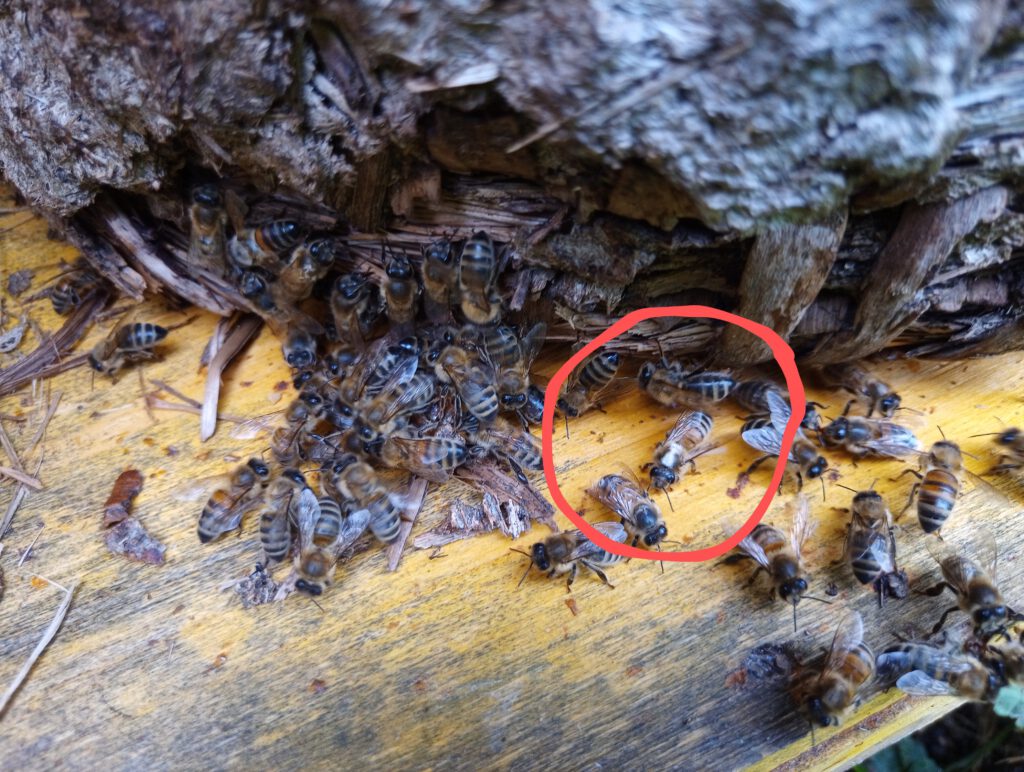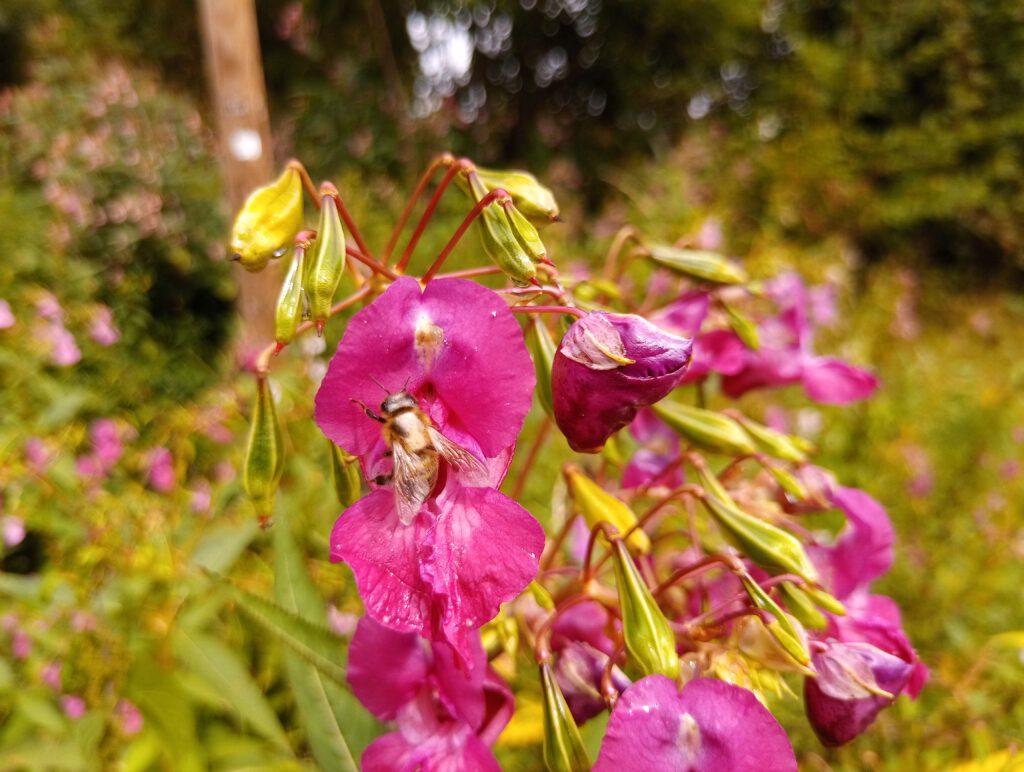In late summer, you can sometimes observe a mysterious natural spectacle at the bees‘ entrance: the ghost bees. These strange bees stand out because of their unusual color. Instead of the regular black chitin shell and the brown, orange bristles, these bees shine with a whitish sheen. This coloration can vary in intensity. Some bees only have a white spot on their back, others are almost completely covered in white powder.

Otherwise, these ghost bees do not show that there is anything special about them. The other bees do not seem bothered by the mysterious phenomena either. Whether white or not, all bees go about their daily activities as if nothing is going on.
At first glance, these bees appear sick. You might think that a fungal infection is causing trouble here. The white coating gives the impression that the bees are moldy. New beekeepers in particular, who are not yet familiar with this spectacle, can panic at the sight. But what is happening here is not bad at all, but a completely normal and harmless natural phenomenon.
If you look very carefully, you can see that the bees all fly out in their normal coloring at first. Only after their foraging flight do some of them return transformed into ghosts. The white coloring often increases over the day. So somewhere along their foraging flights the bees are slowly turned into white ghosts.

The reason for this magic is of course a plant that the bees visit. It is a very special plant that only blooms in late summer and offers the bees a rich source of nectar at this otherwise flower-sparse time of year. The bees can really fill their bellies with the rich occurrence of this plant and collect supplies for the winter. We are talking about Himalayan balsam (Impatiens glandulifera). The light pink to purple flowers of these plants contain a lot of nectar as well as a large amount of pollen. They are also so large that the bees disappear completely inside them when they want to get to the precious contents. This means that the entire bee body is powdered with the snow-white pollen of the plant. The more flowers a bee visits, the more intensively it is powdered with the shiny pollen, until at some point it flies home as a bright white ghost bee.